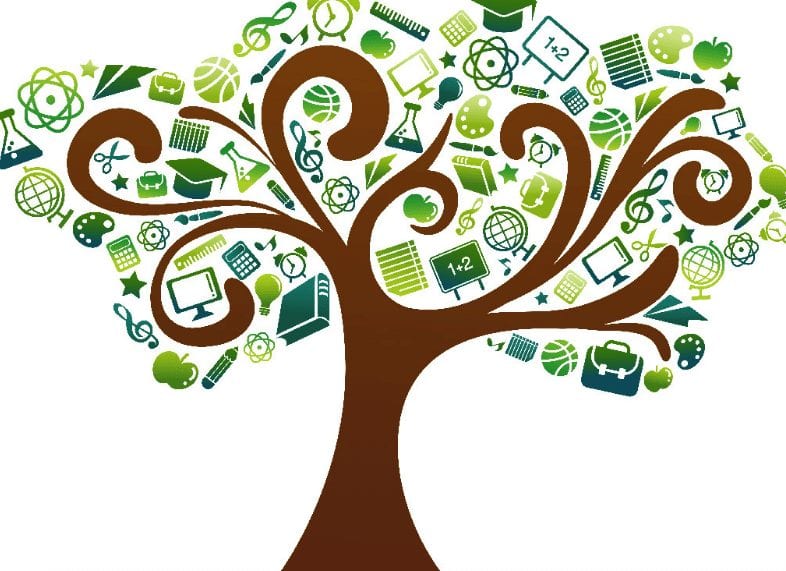by Scott McKinney
C urriculum designers and superintendents who are looking for innovative ways to emphasize Science, Technology, Engineering, Arts, and Mathematics (STEAM) in their curriculum are turning to 3D printers – with extraordinary results.
Recent advances in 3D printing have made this amazing technology affordably in reach of school systems. These printers offer a variety of ways for students to engage with class curriculum and build skills that will be useful in the future workplace.
Georgette Yakman, the creator of STEAM education, described STEAM as, “Science and Technology, interpreted through Engineering and the Arts, all based in elements of Mathematics.” With that in mind as an overarching framework, here are some ways that 3D printers can be used to further each of the five aspects of STEAM education:
Science
3D printers can be used by both teachers and pupils to build ready-to-print models in biology and chemistry.
For biology classrooms, 3D printers can create real-life models of biomolecules, including proteins and nucleic acids such as DNA. The software program VMD allows teachers or pupils to load a molecule directly, edit it for a more rigid physical structure, then upload to the 3D printer maker space for printing.
Aaron Oakley, an Australia-based 3D molecule maker, has some examples of designs and prints on his Thingiverse page.
Students and teachers can also use 3D printers to generate physical models of chemical compounds. The NIH currently sponsors a 3D Print Exchange that hosts blueprints of thousands of chemical structures.
The Exchange started in 2007 as a way to help researchers print accurate chemical models. It now gives chemistry educators a way to engage students who are hands-on, tactile or spatial learners.
Using the tools available at the Exchange, they can readily print out 3D models of chemical structures. These models can be utilized by the teacher during lectures and presentations, or created by the students themselves as part of classroom activities.
Technology
3D printing gives students a multitude of opportunities to build practical skills that will help them later in life. Students who use the technology learn to interact directly with state-of-the-art software and see the results quickly: it provides a shorter route between design and implementation than anything previously available in the classroom. CAD students, for example, can quickly and inexpensively implement their designs into practical applications.
It also offers younger learners a chance to work with software. Apps such as Tinkercad and Thinker Thing enable children to imagine new toys, design them in an easy-to-learn software program, then print them in real life.
3D printing also offers a way for students to share designs and experience remotely with other students worldwide, like a modern day pen pal system. A variety of online communities, such as Thingiverse, enables Makers, including students, hobbyists, and professional researchers, to collaborate, share designs and how-to advice. This gives students the added benefit of experience with distributed teams and knowledge, two key components of the 21st-century connection economy.
Engineering
3D printers offer a unique way for students to develop their engineering skills in a classroom setting. Students can be given an assignment or problem to solve, and set about to solve it using the 3D printer.
A recent example that stands out: students on a research team in Washington University – St. Louis, designed a prosthetic arm for a 13-year-old girl who had outgrown her previous one, and printed it out, at a total cost of $200, a fraction of the standard $6000 cost for such a device.
Another area that has garnered interest among 3D printing students and researchers: creating braille objects or similar tactile versions of books for visually impaired children.
Art
STEAM emphasizes that art is a process involving design and creativity, and 3D printing gives students a unique opportunity to imagine, design, then quickly see the tangible results of the work. It gives students a chance to apply art, rather than simply learn it.
It also provides a way for students to cheaply and safely improve the design of existing technologies – as in the case of the students who engineered the $250 prosthetic arm.
This engages the right-brained, creative side of students: it enables them to imagine a device or product in their minds, design it, then see the practical results come out of the printer.
Mathematics
As with chemistry and biology, 3D printers make it possible to create physical representations of geometric objects: the Simons Foundation gives examples of printed shapes such as a fractal and a torus.
Much of 3D printing also requires a practical application of the basics of geometry and numbers. Designing requires taking real-life measurements and calculations and using them to input into software.
Improving designs also require taking geometry into consideration: reports indicate that many of the standard molecular models, such as are seen in pictures in chemistry textbooks, are fragile when constructed by current consumer 3D printer models. Hence, adjusting the proportions and dimensions is necessary to produce a more durable piece. This gives students a taste of the practical mathematics they would use as engineers or technical specialists.
What’s Next?
So, what are the next steps for a superintendent or curriculum designer looking to implement 3D printing in their classrooms?
There is a range of 3D printing tools available, starting from several hundred dollars up to the thousands. Many of them can be found on Amazon.
There is a range of how-to sites for using 3D printers: Thingiverse is an excellent starting point.
Youtube offers a range of examples of examples of classrooms applications of 3D printers.
EdTech recently published a post with three suggested projects for classroom 3D printing.
Regardless of the exact applications, you have in mind for your school district or classroom; there is a growing wealth of resources and a shared community waiting for you.

